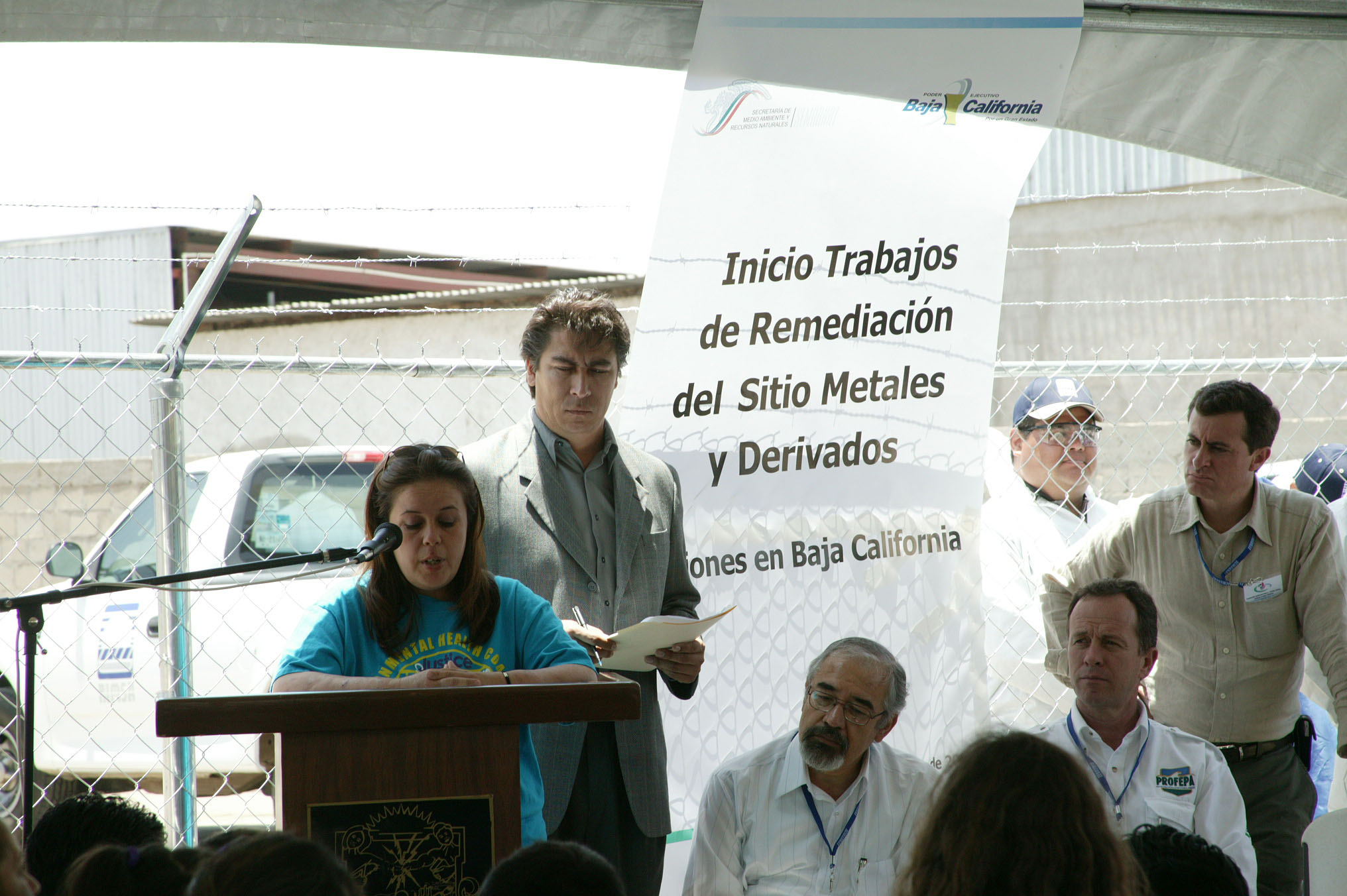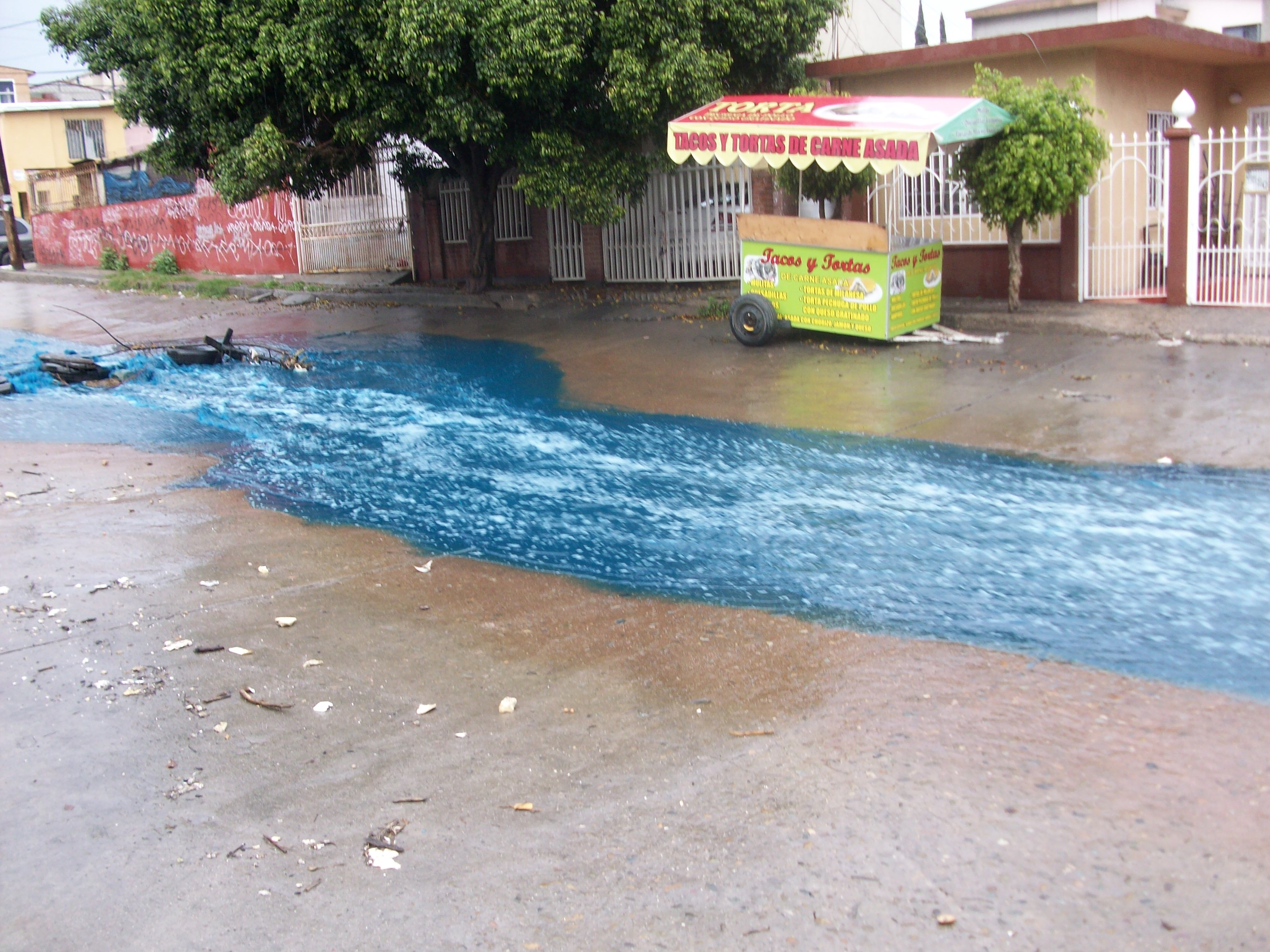Environmental justice matters because of people like Lourdes Lujan. For 18 years, Lourdes has helped inform her neighbors about local health and environmental hazards. At our 2016 award celebration, One People, Una Frontera, Lourdes shared stories of protecting Arroyo Alamar in Tijuana and organizing a cleanup of 45,000 tons of toxic waste. Now, she shares her story with you:

I was introduced to EHC in 1998, and have been a part of this movement ever since. Similar to many who work at EHC, I started out knocking on my neighbors’ doors to explain the health and environmental threats that Metales y Derivados represented for all of us. I would invite them to meetings – which were held in our homes back then – so that all of us could find a solution together.
I never imagined that from that work to organize our neighbors that we would achieve a clean-up of 45,000 tons of toxic waste and that we would now be successful in saving part of the Rio Alamar.
When I was invited to participate in the Maquilapolis documentary, I could not imagine how a video could explain the environmental, health, and work issues we were living through, much less that the documentary would make it around the world.
We, the community health workers, feel proud of having met Vicky Funary and Sergio de la Torre, the project’s producer and director. Maquilapolis gave me the opportunity to see many more cities and countries that I never thought I’d get to see in my lifetime.
I am very grateful to EHC for everything I have learned; I am grateful for all the support for our community; I am grateful for being able to work with all of you for a healthier community.
Conocí a EHC en 1998 y desde entonces soy parte de la organizavion. Al igual que varios de los que trabajan en EHC, yo comencé tocando las puertas de mis vecinos para explicarles los problemas ambientales y de salud que representaba Metales y Derivados para nosotros. Los invitaba a reuniones, que en ese entonces las hacíamos en nuestras casas, para encontrar la solución entre todos.
Nunca imaginé que de ese trabajo involucrando a mi comunidad, lograríamos una limpieza de 45,000 toneladas de residuos toxicos, y que ahora tendríamos el éxito en poder salvar parte del Arroyo Alamar.
Cuando me invitaron a participar en el documental Maquilápolis, no imaginaba cómo un video podría explicar los problemas ambientales, de salud y laborales que vivíamos, y además que daríamos la vuelta al mundo con este documental.
Nosotras las promotoras nos sentimos orgullosas de haber conocido a Vicky Funari y Sergio de la Torre, productores y directores de este proyecto. Con Maquilápolis tuve la oportunidad de conocer muchas ciudades y países que nunca en mi vida pensé que llegaría a visitar
Estoy muy agradecida con EHC por todo lo que he aprendido, estoy agradecida por todo el apoyo a nuestra comunidad, estoy agradecida por trabajar con ustedes por una comunidad más sana.








